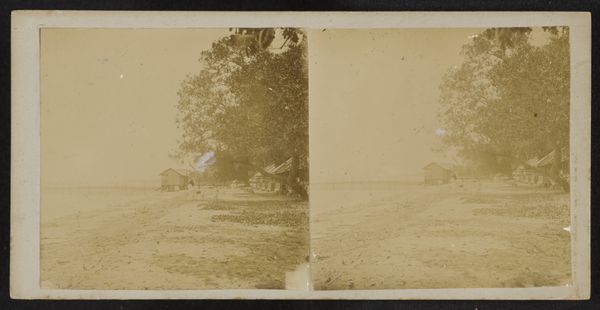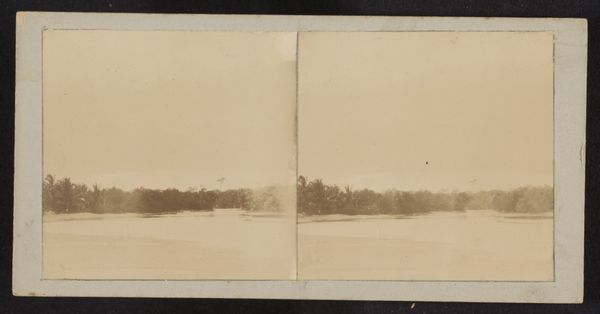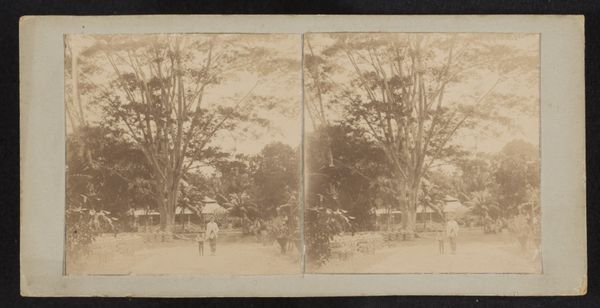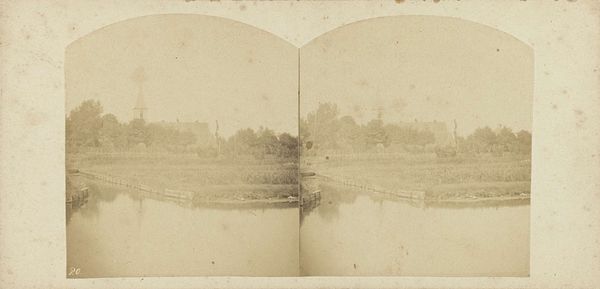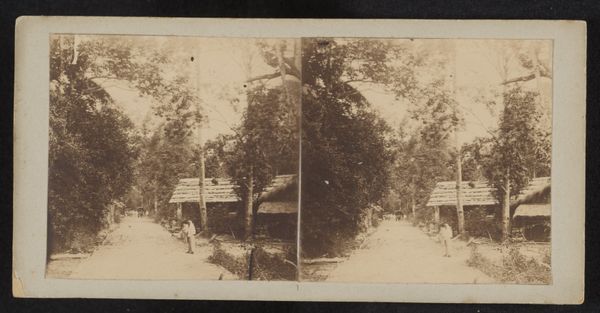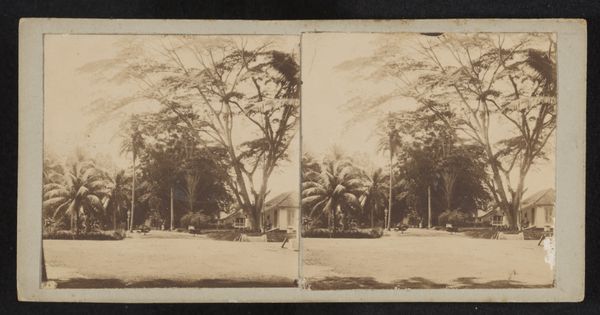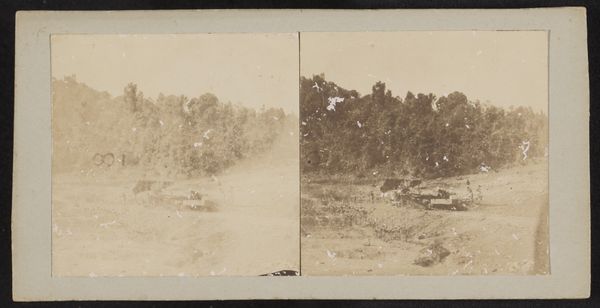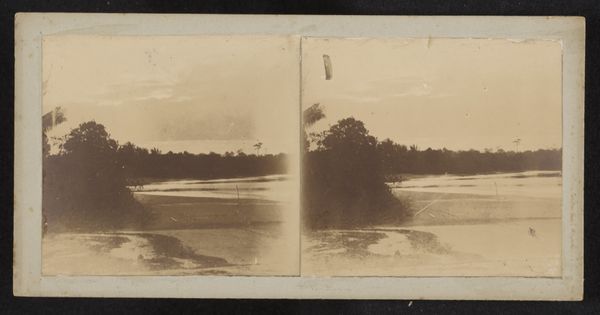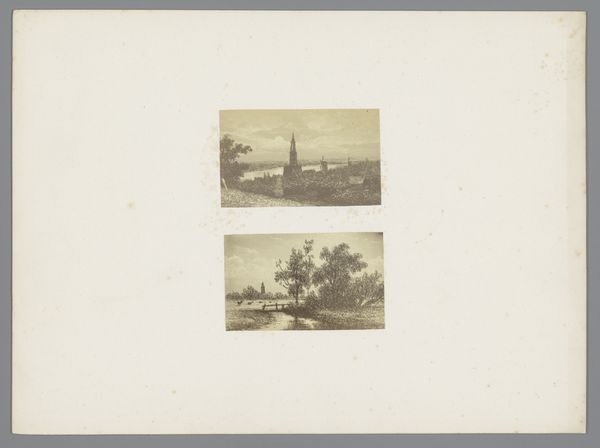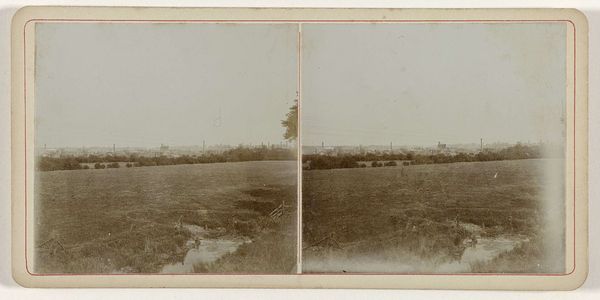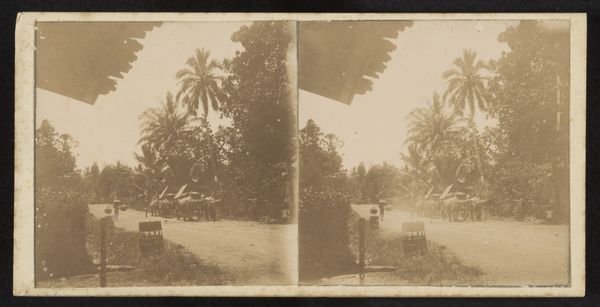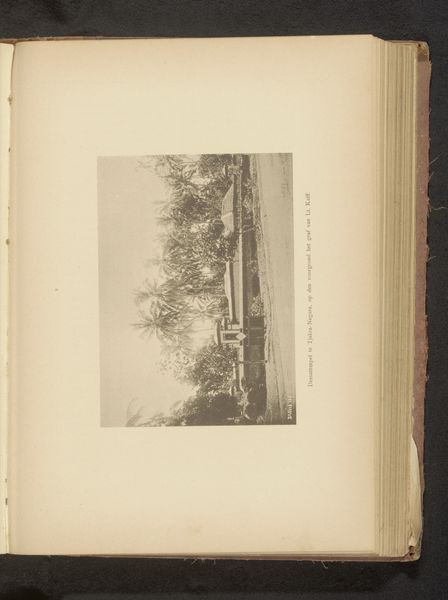
photography
#
pictorialism
#
landscape
#
photography
#
orientalism
Dimensions: height 80 mm, width 80 mm, height 88 mm, width 178 mm
Copyright: Rijks Museum: Open Domain
Curator: This photograph, "Gezicht te Muntok", was created sometime between 1900 and 1922 by Robert Julius Boers. Editor: My first thought is tranquility; despite the visual noise from the photograph's age, there is something incredibly peaceful about this scene, the soft light, the distant pavilion. Curator: Absolutely. And I think part of that serenity comes from the "pictorialist" style. Boers deliberately softens the focus and uses tonal effects, techniques embraced by pictorialism to create images that are often less about literal representation and more about conveying atmosphere and emotion. But we cannot overlook that this work embraces orientalism, so these aesthetics may be romanticizing a complicated history of power relations. Editor: That is vital to keep in mind. Given the history of the region—Muntok being a port city in Bangka, part of the Dutch East Indies—Boers’s lens may not have simply documented a landscape but reinforced colonial narratives. Were these images part of a broader campaign to create a desirable image of the colony for those back in the Netherlands? Curator: It's entirely possible. The Rijksmuseum, where the work is currently held, gives context to this relationship. These institutions, these images, served very specific political purposes. The visual rhetoric of a landscape painting became deeply intertwined with imperial ambitions. Editor: Examining such art calls us to engage in that precise kind of deconstruction. To understand how notions of gender, class, and race might have subtly, or not so subtly, informed this photographic work, which impacts our interpretation today. What seems a "simple" photograph has quite complex threads running through it. Curator: Precisely! To me, this is why situating works like “Gezicht te Muntok” in broader social and historical discourses is not simply informative, it is necessary to see them in full clarity. Editor: It truly compels us to see past the immediate allure of the vista, urging a deeper and more conscious appreciation.
Comments
No comments
Be the first to comment and join the conversation on the ultimate creative platform.
